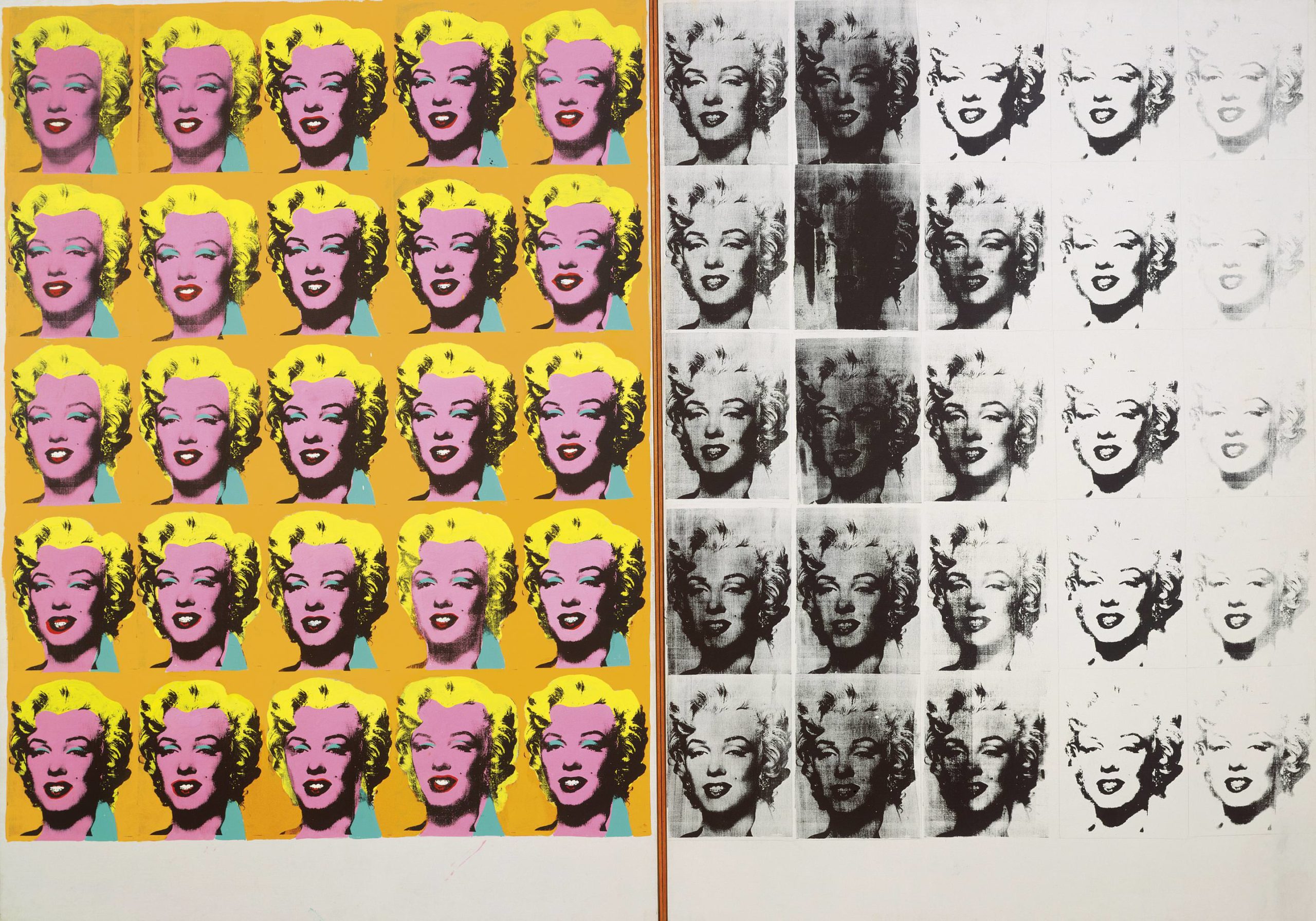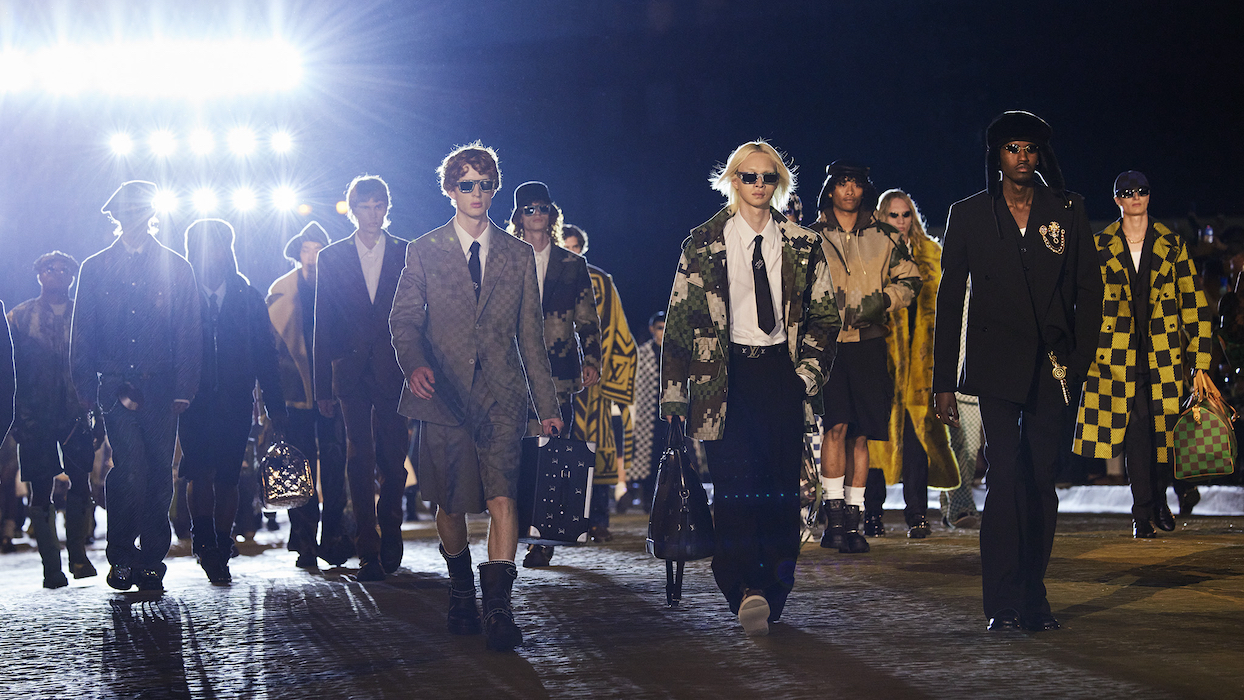We are the Superlative Conspiracy (WeSC) isn’t your average streetwear brand. Relaxed fit and simple design allows for the streetwear aspects of their label to really shine, but fine materials, structured shapes, and careful partnerships take their global brand to the “premium streetwear” level. They pride themselves on being involved with culture, and they are reputably built up by “intellectual slackers,” or better yet, rich with “like-minded individuals who think differently.” They seek to target those that are intelligent, but always a little left of center, and insist on going their own way with a rebellious spirit to push the envelope.
After a recent collaboration with the Andy Warhol Foundation, WeSC celebrated the launch of their newest funky line—The Andy Warhol Conspiracy—at Paul Kasmin gallery’s PK Shop this summer. It was there that we were able to see many garments using original Andy Warhol images for the first time. Warhol’s series of black-and-white selfies and camo prints are imposed on many items like underwear, swimming trunks, skateboards, and headphones.
To gain a better understanding of WeSC’s colorful collaboration, the brand’s Swedish roots, and their global vision, we spoke to WeSC’s North American CEO Joseph Janus.
WHITEWALL: How did the partnership with the Andy Warhol Foundation come about?
JOSEPH JANUS: The chairman of our board is an avid art collector and a big Warhol fan, and he knew the people at The Warhol Foundation very well, so he actually had the idea. Warhol did these great camo prints, and I knew of the camo prints because Stephen Sprouse (originally for Debbie Harry) put them out. And I thought, “Oh, how cool,” because this is a way of not only taking that new intellectual slacker—the guy on the street—and teaching him about art, or teaching him about someone like Andy Warhol, but they’re just badass.
The other thing is that the Andy Warhol Foundation does really good work at keeping the arts alive, and fueling a lot of art programs, and that’s something that’s near and dear to our hearts. It’s important that we’re getting involved in collaborations that are actually doing something versus just slapping names on stuff for revenue. So, 10% of all proceeds go to The Andy Warhol Foundation.
WW: Tell us about the two different lines—the camouflage and the black and white.
JJ: In the last few years, we’ve tried to make ourselves a little bit more premium streetwear instead of just being focused on one thing, like “skate.” So art and culture becomes a big part of that. Who says it better than Andy Warhol? The idea was how to make something from Andy Warhol that fits what we do. And that’s where the camo came in. It looks cool, it has a story behind it, but it also stands alone even if it didn’t have “Andy Warhol” on it. How great that it actually has this backstory behind it, and that you’re educating people on it at the same time?
So how do you follow that up? You take another work of art and do something different—so we created the Andy Warhol photo series. And the thing that especially fascinated me about Warhol was he was the original selfie taker! He was the guy who never left the house without a camera; he documented himself and his life through a camera at all times. Even though he was a visual artist on many levels, he never left without that camera.
We looked through hundreds of his photos and what we came up with to use are a lot of his selfies, as you can see, as well as pictures he took of just objects. So it wasn’t so much a work of art, but it was his way of self-expression.
WW: How does Swedish influence impact American fashion?
JJ: Fashion-wise, you’d be amazed at how much of American is influenced by Scandinavian and Swedish fashion. There are so many powerful brands that have entered the American market from Sweden that have brought this clean, minimal, tasteful, colorful palette to the American people that I think we’ve almost adopted it for our own now, but it really comes from Sweden. Think about Ikea, think about H&M. If I had to put a label on Swedish aesthetic, I’d say it is clean, minimal, colorful and high quality. And those are things that apply very nicely to the American market, whether you’re trying to sell furniture or clothing.
WW: What makes WeSC “premium streetwear?”
JJ: We are better materials and better quality for a more diverse range of customers—not just young, not just old. We are a lifestyle brand in the true sense that we want to grow with your lifestyle. So when you shop WeSC, we want to have something that makes you feel dressed up, but also, a tank top and some shorts for you to wear on the weekend. If we fit into your lifestyle, we want quality clothes for you to wear. If you’re that intellectual slacker, and we’re your heritage brand, we’re growing with you, not away from you, under you, or ahead of you.
What’s important is that Warhol is cool to us, and we think that to the intellectual slacker, Warhol will be cool to too. We don’t market to the masses; we market to those that understand the message.









